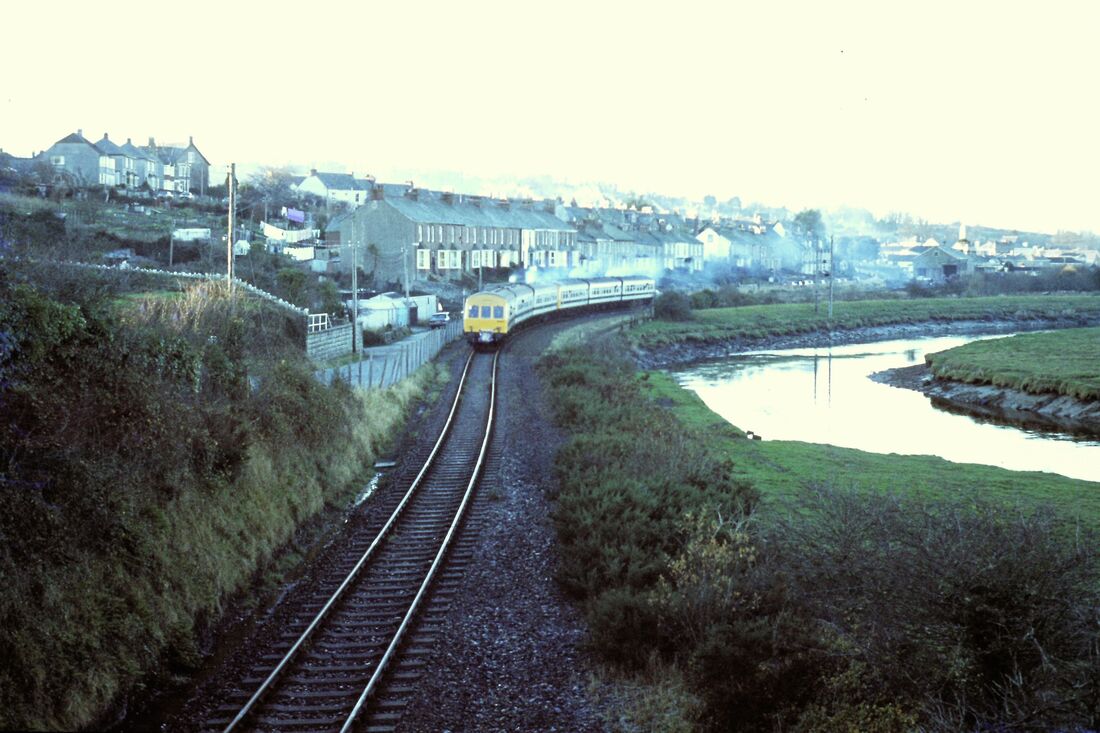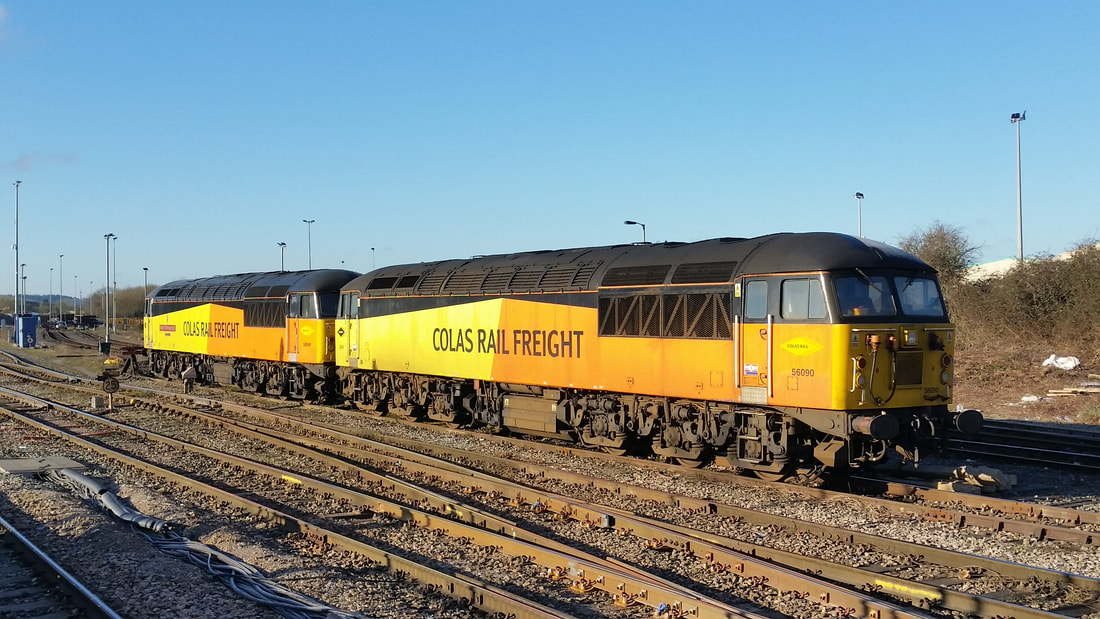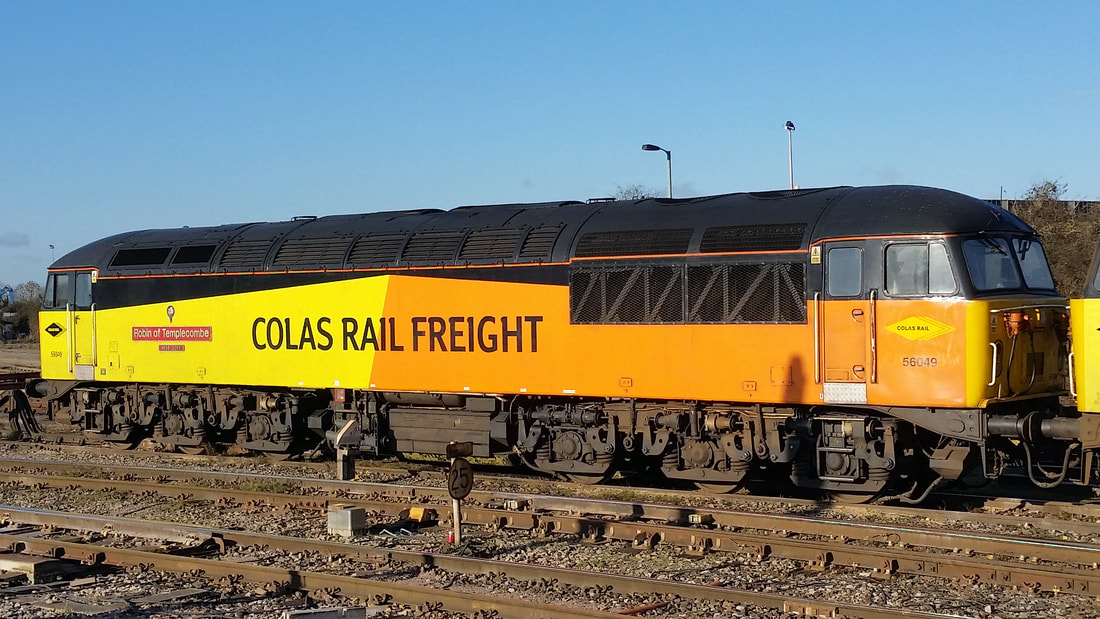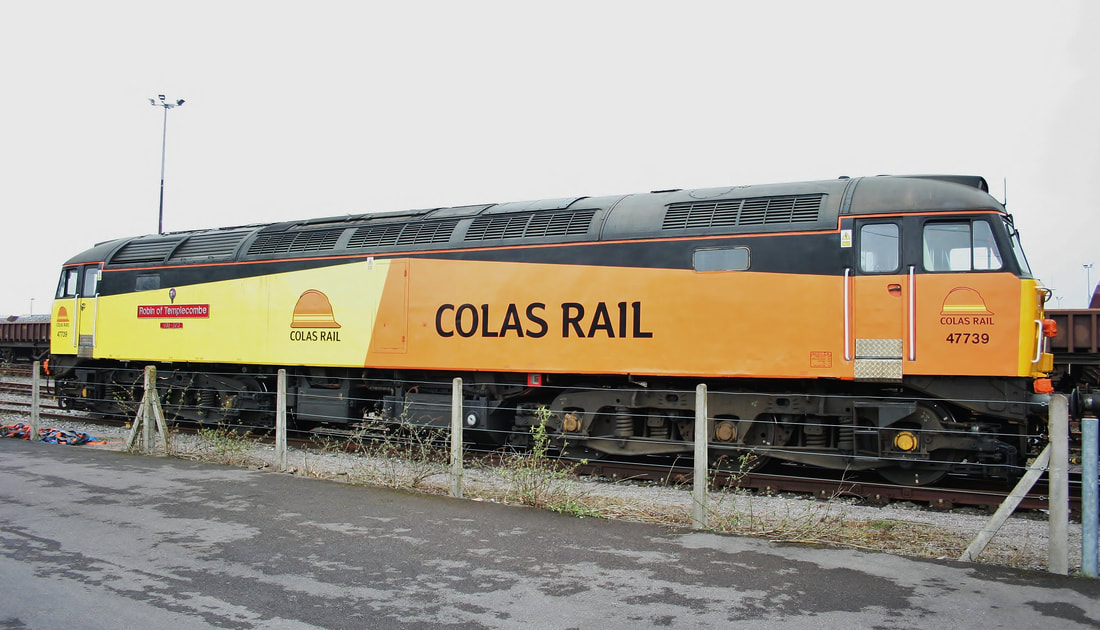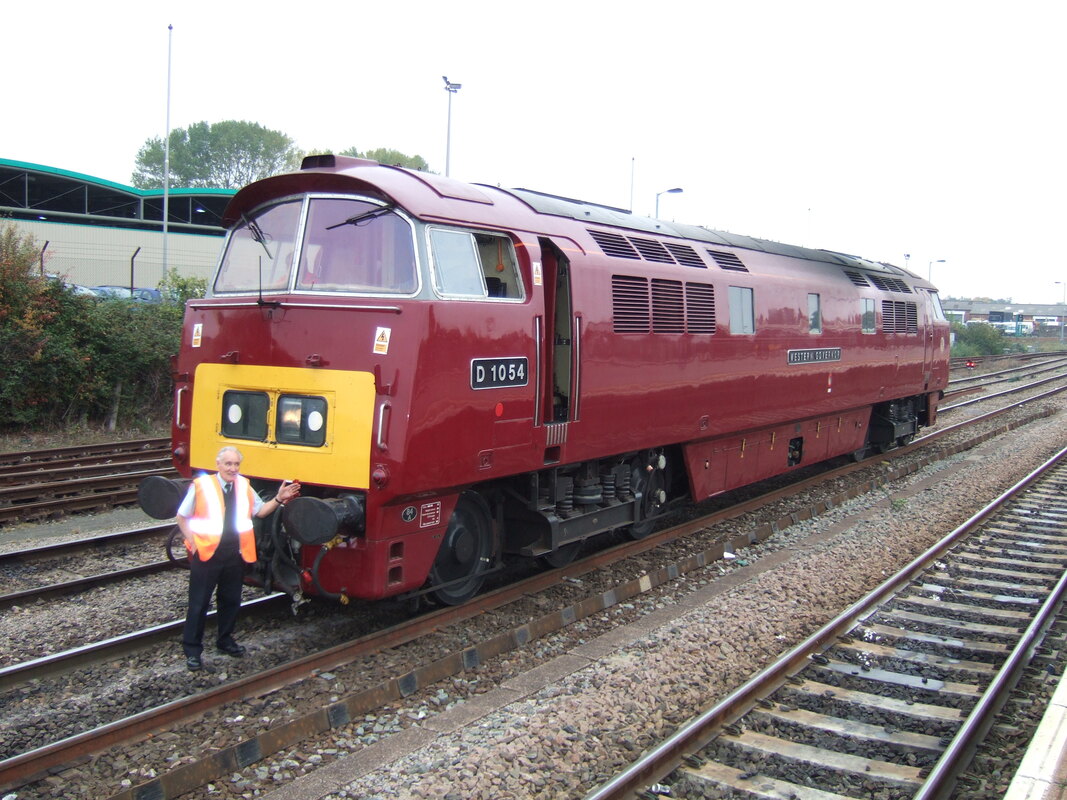Laurence Hansford
Well, there’s a thing! I never imagined that they would be re-laying a mile and a half with long welded track! Apart from the last three years (when they replaced the track at Lelant, fiddled with the platforms at St Erth and installed a new bridge at Griggs Quay) maintenance of the branch has been, shall we say, skimped (others might say woefully neglected). Most of the track from the footbridge just over Carbis Bay Viaduct up to about where the Distant Signal is now is concrete sleeepered and I remember that being done in the mid to late -50s, more than 60 years ago. Funnily enough, the next section of track towards St Ives, with wooden sleepers, is actually newer and I watched that work being done about 1960.
All the work was done on Sundays just out of season when the weather was still OK and there were no trains. The entire process was done manually by a team of about 2 dozen men, their only powered machine being the steam engine which propelled their train which consisted of a mess coach, a couple of bogie bolster waggons loaded with rails, some drop-sided trucks loaded with sleepers, a couple of empty trucks and some hoppers full of new ballast. The mess coach was a an ancient 3rd/brake with some compartments removed, leaving enough seats for the gang, the remainder of the space being for their tools and gear but with a coke stove for a brew. My recollection is that this was arranged to be next to the loco with the steam heating connected-up so they had somewhere warm to take their breaks!
The sleepers were all brand new treated timber but with reclaimed chairs and the 60 ft bull-head rails were second-hand but little worn, having been recovered (so I was told) from fast main line service where they were being replaced by flat bottom track. I believe the new ballast came from a quarry which used to exist alongside the main line at Menheniot. The gang worked pretty hard and would very methodically re-lay something like 5 lengths in a day but to do this they had to work as a team.
The procedure, at least as I recall it, was as follows: The train would slowly draw forward and a team of 4-5 men on the bogie bolster would use crowbars to lever rails to the edge to be deposited in pairs alongside each length of track to be renewed, all on the same side. Next, the train would re-trace its steps and the men on it would transfer their attention to the trucks with the new sleepers, where the latter would be manoeuvred to the edge. The men on the ground would then lift them off and stack them neatly alongside the new rails The train would then retire clear of the work area.
The team then transferred their attention to the track, concentrating on and completing one length at a time. The first things to be done would be to knock out all the keys and remove the fishplates. This allowed both rails to be lifted out and deposited on the other side of the track from the new materials. The men then set-to with shovels on the old ballast, clearing it out from between the sleepers and throwing it out just beyond the old rails, and being careful to scrape it out to the level of the bottom of the old sleepers but no further. Then, the old sleepers would be lifted off and dumped on the old ballast ready to be collected later. Lastly the now flattish ballast bed would be checked and any irregularities corrected to the satisfaction of the ganger, foreman or inspector or whatever he was called (I am not sure which but, remembering this was West Cornwall 60 years ago, I rather think it would have been “Cap’n” or “Skip’”!).
Relaying could then commence, starting with the new sleepers which were carried into position on the cleared track-bed being very careful to ensure that the chairs were all in line. The team then got to together to carry the new rails and place them in their new homes after which all the fishplates were replaced and the bolts tightened. Before driving the keys back into the chairs, considerable attention was paid to make sure that all the sleepers were evenly spaced and not skewed and that the rails were straight. Once the keys had all been driven home the last thing to do was to ram the ballast under the sleepers (whilst access was still easy) to make sure they were all properly supported.
Having thus made the track safe enough so that their train could later pass over depositing new ballast, the team then moved on to the next length to be done and repeated the whole performance as above. Once the requisite number of lengths had been completed (I seem to think they managed 5 in a day) the Cap’n would spend some time checking the alignment of the new track directing adjustments, as required. When finally satisfied the train proceeded very slowly and the controls on the hopper wagons would be operated to drop the right amount to fill the gaps between the sleepers and once the train had passed the men set to with their shovels to put the finishing touches to the new track.
One might imagine that, at this point the men could gather up their gear, jump back on the train and clear off home; unfortunately in those days, this was not the case – they had to clear up site first! This was just as organised as the relaying itself. First to be loaded back onto the train were the old sleepers. These were loaded back on the wagons which had brought the new ones, taking up roughly the same space, except for the few which didn’t make it in one piece. Then it was the turn of the rails and, in broad terms, they were also put back where the new ones had been, except that in this case the procedure formed a spectacle in its own right! Bearing in mind that standard 60 ft Bull-Head rail weighs 97½lb per Yard, making each rail weigh the best part of a ton, lifting them off the ground to above shoulder height was not a job for the faint-hearted. Even with 24 men the only way to make it reasonably easy was with a well-rehearsed routine with the help of the railway equivalent of a sea shanty. In unison, the men would sing out something like 1,2,3-up-1,2,3-up-1,2,3-up-1,2,3-up… and the rail would magically rise from the ground until deposited on the edge of the bogey bolster from where it would be crow-barred home. The last job was then to shovel all the old ballast back into the empty waggons but my recollection is that, to save time, a lot of it was piled on top of the old sleepers. (It meant that they could work along the length of 5 or 6 wagons instead of just a couple.)
After a quick tidy up and the loading of all their tools, off they went leaving the track ready for the commencement of normal running on Monday morning. Although at this stage the new track appeared perfect, I imagine that in the next week or two the St Ives Ganger and his assistant (they lived in the brick building on the other side of the track from the Engine Shed) would make final adjustments re-packing the track and getting the alignment perfect as passing trains shook all the individual lumps of gravel into a better fit with one another. All I can tell you is that, although I very rarely saw them, they kept the whole line in petty much immaculate condition with all straight track (not that there is much of it apart from over the Lelant Towans) dead straight and all curves nice and smooth.
I note that they say it will take 5 weeks to re-lay 1½ miles; this is interesting. There are 88 standard 60 ft lengths per mile and hence 1½ miles would be equivalent to 132 lengths. If the men are working a 6 day week, 5 weeks would contain 30 working days. That means that they will be re-laying the equivalent of 132/30 = 4.4 standard lengths per day. The bit I find interesting is that 60 years later, with all their up-to-date highly mechanised machinery they can’t achieve what a couple of dozen men were able to do with their bare hands. And, by “bare hands” I mean just that, no gloves or any other sort of PPE except that I think they were issued with oil-skins so that they could continued to work in bad weather. They just wore their old clothes and I think even provided their own hob-nailed boots (no steel toe caps as far as I know). In fact, I don’t remember seeing any railway workers wearing gloves, not even firemen shovelling coal! As for all-weather Hi-Viz jackets and helmets with shatter proof visors… dream on.
The photos of all the new material dumped around Carbis Bay Station do raise an intriguing question: How did it all get there? As for the rails, the answer is pretty self-evident, bearing in mind the recent rail delivery trains with the enigmatic destination of St Erth but the pallets of steel sleepers and bags of ballast are a different matter. Normally, on branch lines, it seems these, as well as the machines themselves are delivered by road to convenient points along the line but the St Ives line is a bit different: Most of it is balanced along the cliff edge where it is not possible for a road to be anywhere near and, between Lelant Station and St Ives Station there are simply no roads near the line capable of taking HGVs and the only “road” that does isn’t close to the line where the two are at roughly level. Even at Carbis Bay Station, where it probably would be possible to get an HGV into the Station car park there is certainly no track-side road access. So, how are they doing it? By rail, or is that too obvious!?
For more current material please see our collection in the features section January to June 2021 section item 2103
-------------------------------------------------------------
Guy Vincent
Inc shot of the late Robin Gould standing in front of D1015 at Westbury after it had taken some redundant china clay tankers from the closed ECC plant at Quidhampton, Salisbury to Burngullow, Cornwall. 15th Oct 2009. Also a picture of 47739 in Westbury Down Yard on Friday 22nd March 2013, the day of Robin's funeral, when Colas kindly sent the loco they had named in his honour down as their tribute to him.
Guy Vincent.
Wadebridge
Micheal Manning
I have a picture of Delabole not long after the tracks were lifted in April 1968.
But I have no dates of when they reached the end of the parallel running just before Wadebridge station.
